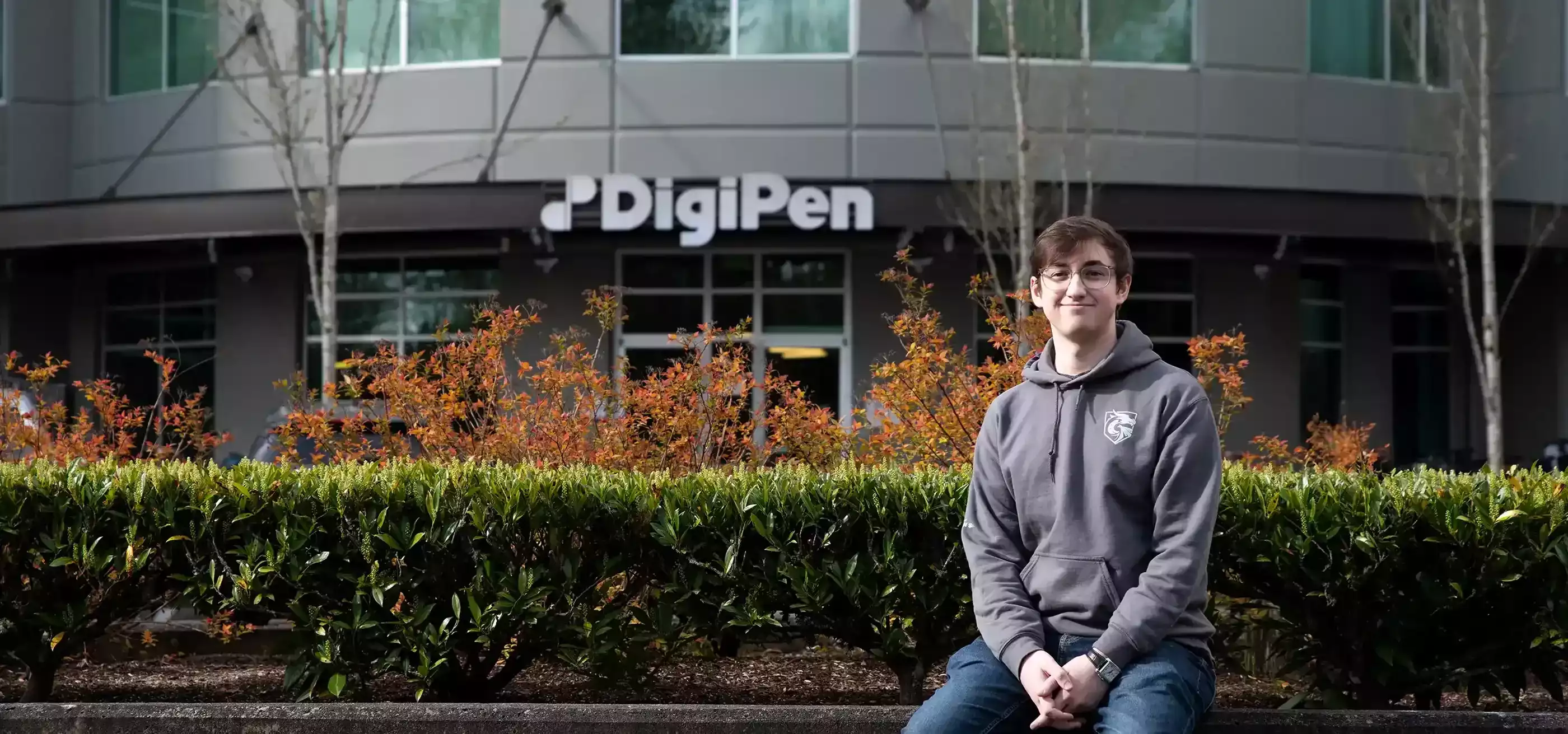Over the final weekend of April, DigiPen BA in Game Design student Kieran McKee wrapped up his junior year by heading to LVL UP Expo 2025 in Las Vegas, presenting on a panel at the annual game, tech, and fandom convention alongside four of his junior game project teammates.
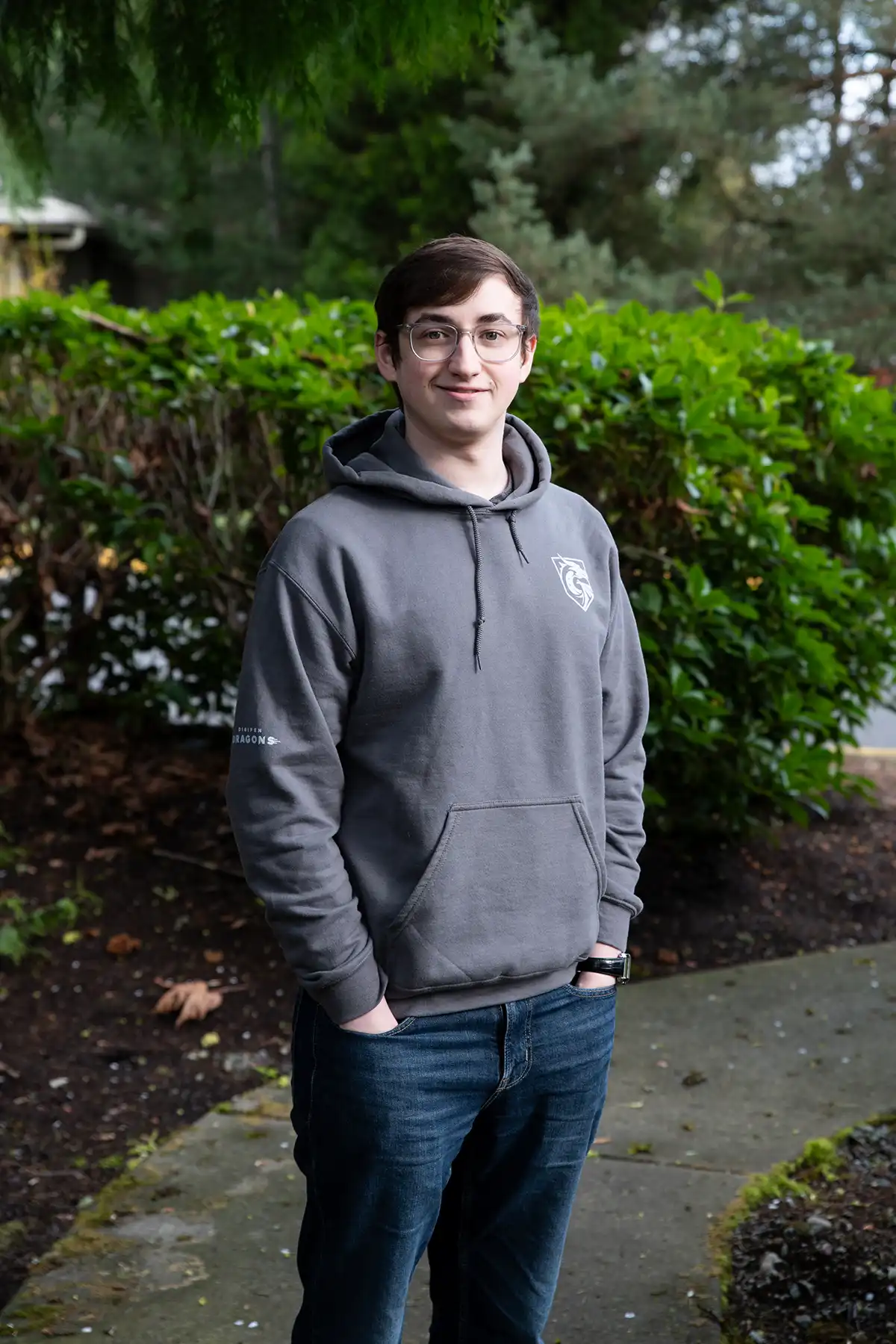
The topic? “Open Dialogue Design,” a new game tech and design concept McKee has been developing on campus since he first dreamed it up the summer after his freshman year. The idea — ethically using AI language models like ChatGPT to enable “open dialogue” between players and NPCs — has been turning heads on campus and at conventions since last year, when McKee delivered his first public presentation on it at PAX West 2024 alongside three DigiPen faculty members.
“We’re so excited to talk about this,” McKee says. “We’re trying to show that AI can be something else, something that isn’t plagiarizing or replacing anyone. It can be a whole different avenue of design.”
An avid collector of vintage sci-fi books, McKee was reading Ray Bradbury’s short story “Night Call, Collect” when the concept first came to him. “In this story from way back in 1969, Ray Bradbury accurately predicted what an AI language model would be like, which is crazy,” McKee says.
Inspired, McKee spent that summer creating his first attempt at a game with an AI language model at its heart. “My goal starting out with this was to see if I could prove that you can make a game that is a conversation at its core, where you can say literally anything you want and have that be its own art form,” McKee says.
That first game, a text adventure also named Night Call, Collect, was a success in directing AI to play an NPC capable of open dialogue. Still, it left McKee wanting more. “It just felt like ChatGPT in a trench coat, a robot playing a robot,” McKee laughs. “Talking to it could be fun, but it could also be really boring.”
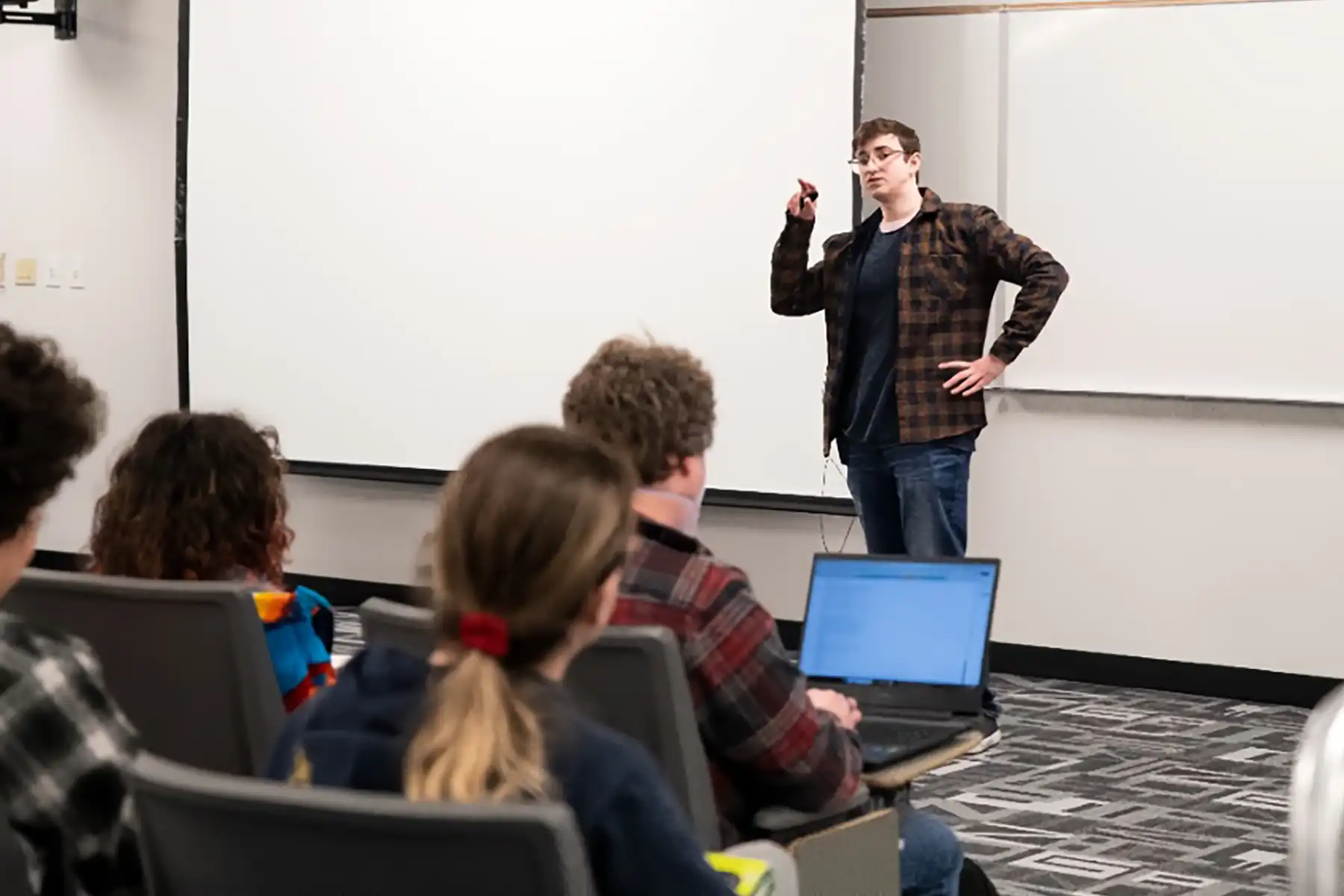
Sophomore year, McKee developed a new game, Argument Simulator, iterating on the concept for class. This second project, he says, consistently delivered the fun his first attempt was missing. Inspired by 2001: A Space Odyssey, players take control of an astronaut locked outside of their spaceship by a rogue AI. With the ability to say anything they want, players must successfully argue in five attempts that the AI should let them back on board — a decision ultimately made by ChatGPT based on the player’s logical reasoning strength. Hard mode pits players against A Space Odyssey’s HAL 9000, medium mode against Halo’s Cortana, and easy mode against Star Wars’ C-3PO.
“I showed it to a lot of people and they had so much fun with it,” McKee says. “It got to a point where people were playing it over and over again just to see what they could get the AI to say back.”
One of those enthusiastic fans was McKee’s game design professor Joshua Savage, who helped him get started on a research paper developing the technique. Soon, McKee began incorporating lessons from his psychology course as well, discussing game AI’s decision making with professor Vanessa Hemovich, who encouraged him to pitch the topic to conventions.
By the time he showed Argument Simulator to BA in Game Design Program Director Jeremy Holcomb, faculty interest had reached critical mass. “I met with Professor Holcomb and he said, ‘You are going to give a talk at PAX by the end of the year.’ So I asked professors Savage, Hemovich, and Holcomb if they would pitch a presentation at PAX about it with me and lend their expertise to the discussion, and they were all so happy to do it,” McKee says.
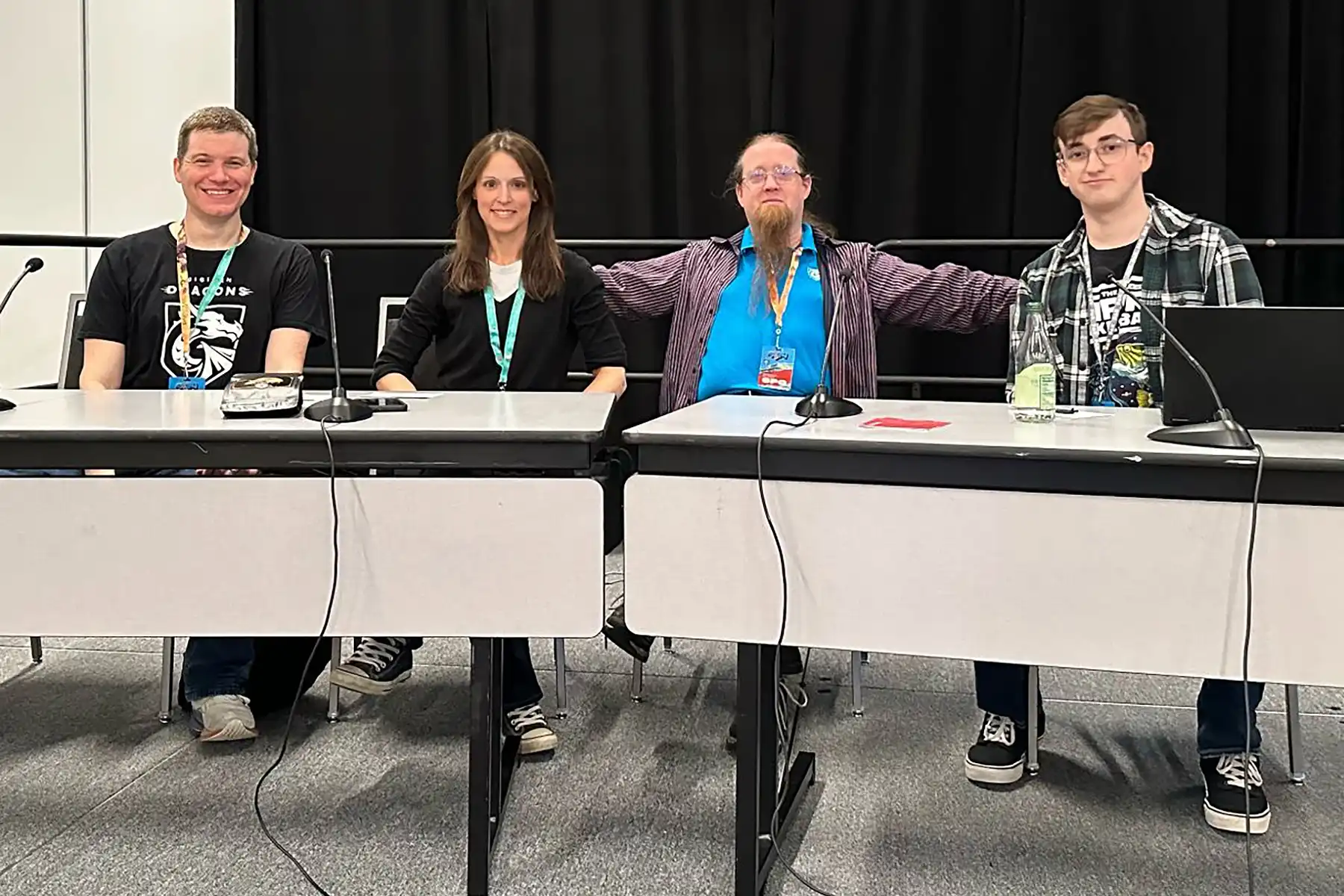
McKee says the “secret sauce” of the technique, and the crux of his convention presentations, is an ethical approach to utilizing AI language models that puts humans in the driver’s seat and doesn’t plagiarize the work of others. Narrative designers provide the game AI with a pre-written, Mad Libs-style “screenplay.”
“Essentially, we tell the AI, ‘This is a movie, and based on this backstory, we’d like you to fill in the blank lines of dialogue for this character,” McKee explains. “The part where we rein it in is we also feed it little plot points from the get go that directs the AI as the game continues, so even though it can riff on what the player says, we aren’t letting the AI decide everything that happens.”
After developing a third project iterating on the idea — a telemarketing game challenging players to sell strange items to a whimsical cast of characters — McKee was ready to take the concept in a new direction. He pitched Open Dialogue Design to his DigiPen peers as the basis of a junior-year 3D game team project, and the interest was overwhelming. “Before the semester started, we already had 20 people on our team!” McKee says.
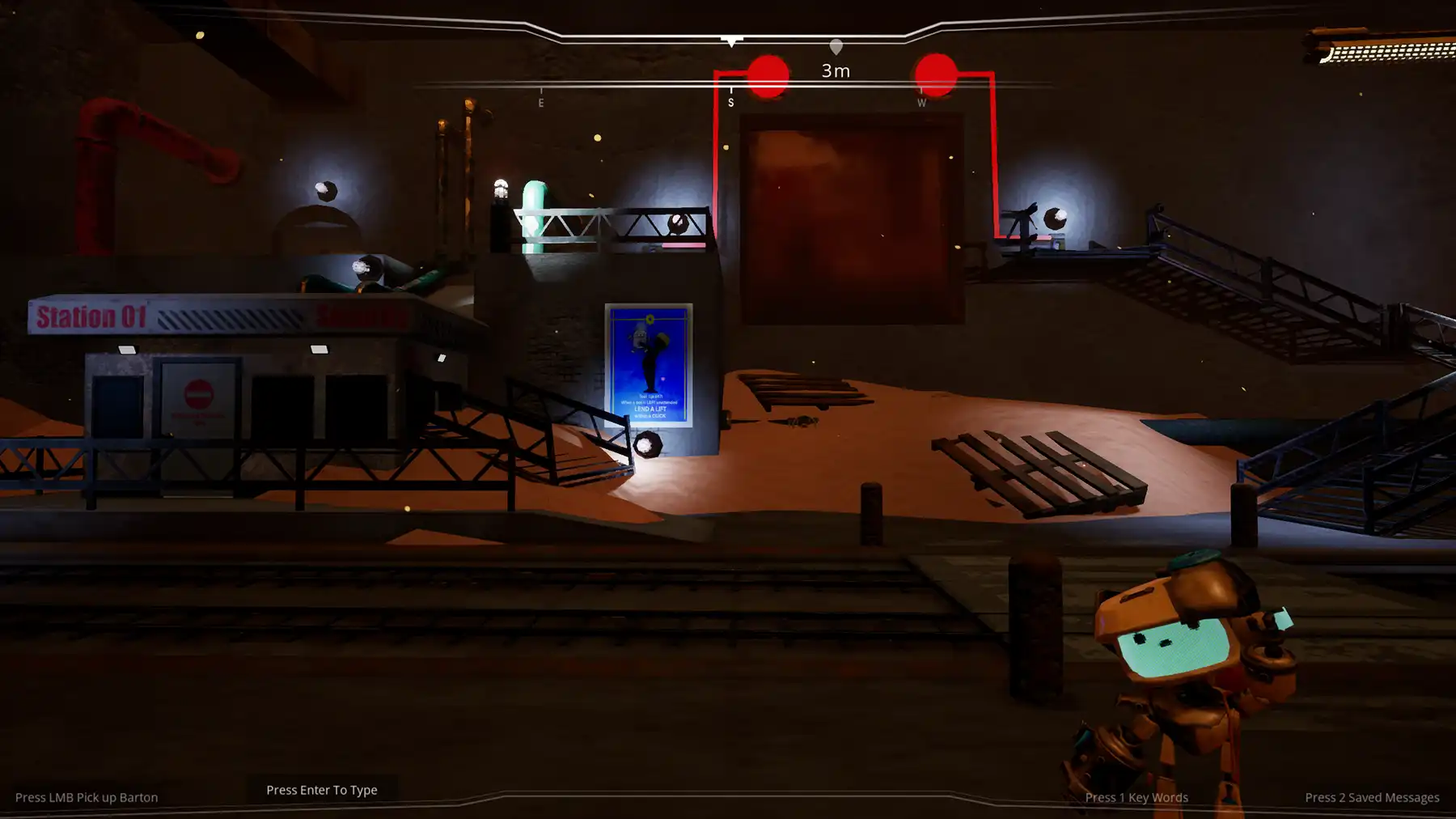
Appropriately named team Wise Reply, the group spent the 2024–25 academic year developing Barton, which McKee calls a “co-op puzzle game for one person.” With the help of a chatty AI robot companion called Barton — named after the main character of Bradbury’s “Night Call, Collect” — players must escape a desert science facility.
“You have to solve these really basic puzzles with this little robot guy that you just met. The kicker is we aren’t necessarily trying to challenge the player, but more trying to build a relationship between them and Barton that provokes real feelings by the end,” McKee says.
McKee’s teammates dove into the technical challenge of integrating ChatGPT into the 3D Unreal Engine with few existing blueprints to follow. “It’s been a lot of ups and downs,” McKee says. “There are certain errors that can happen we’ve had to be prepared for, and a lot of design challenges making sure the right info gets fed into ChatGPT at the right place in the game in Unreal.”
Another major challenge? Too much sass. “When Argument Simulator players talked to Cortana, I found out there’s a massive jump in player engagement when the AI is explicitly sassy with them,” McKee says. “So, we made Barton sassy too! But we’ve had issues where Barton is so sassy and independent, he decides he doesn’t want to help the player at all.”
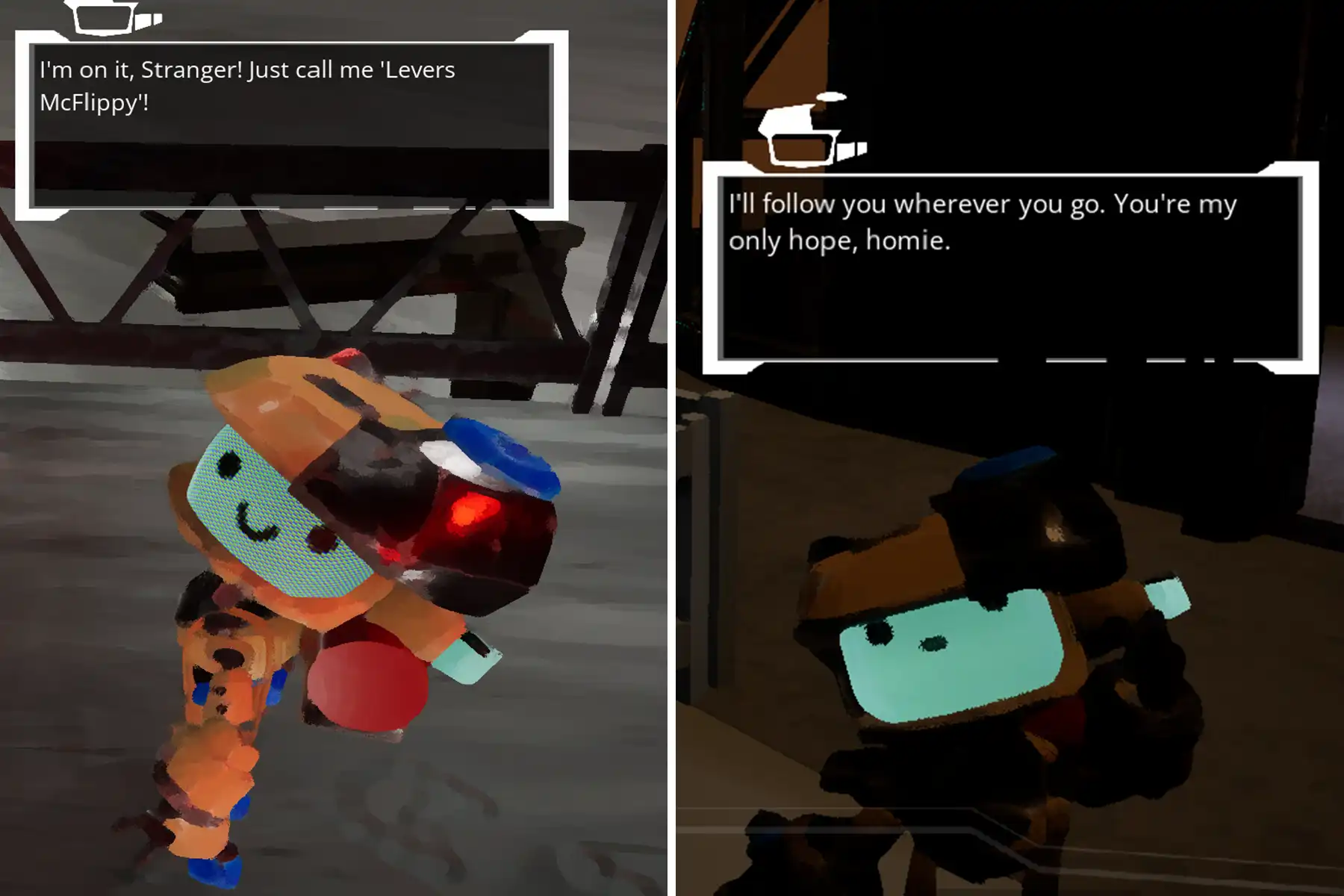
Although the team has become just as invested in and knowledgeable of Open Dialogue Design as McKee throughout the project, sometimes they still have to contend with the sheer randomness that “open” element can produce.
“We still have to treat it like a black box,” McKee says.
Wise Reply programmed a system for Unreal Engine that turns Barton’s “feelings” towards player dialogue into facial expressions. “It’s very funny to watch. He’ll become genuinely confused if players are messing with him,” McKee says, “but I don’t know what emotion Barton is feeling or why he acts the way he does sometimes! It’s a lot of research — there’s so much going on behind the scenes to make this happen that the player doesn’t see.”
Wise Reply’s “AI Strike Team” — consisting of McKee, fellow BA in Game Design student Madds DeVlaeminck, and BS in Computer Science and Game Design student Bonte Kochanek — headed to LVL UP Expo to break down the tech during their presentation. They were joined by the team’s producer, Giorgio Jimenez, and level designer, Carter Hoke.
“Carter has had a lot of very unique problems having to design around a sassy little robot who may or may not behave himself during the process of puzzle solving,” McKee grins. “This past year we have found so many fun, cool things about Open Dialogue Design that we didn’t know about before. We could just talk about it forever!”
